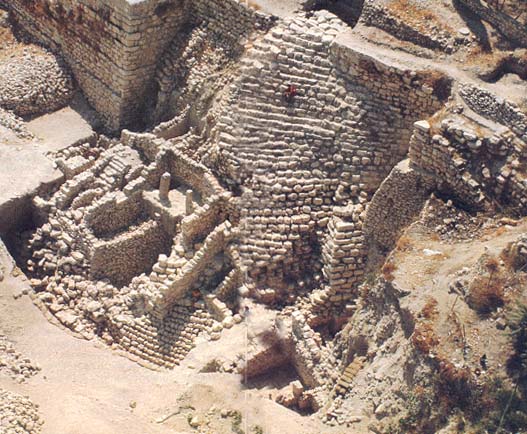A Step-by-Step Guide
Sidebar to: It’s Not There: Archaeology Proves a Negative

One of the most imposing structures to have survived from ancient Israel, the Stepped-Stone Structure, on the eastern ridge of the City of David, originally stood nearly 90 feet tall and 130 feet wide at the top. It is preserved to a height of 50 feet, approximately as high as a five-story building. Scholars agree that the structure incorporates several centuries of building. But the dating of the various elements is hotly contested.
The earliest constructions are the terracing system (in green) and the stepped mantle (orange). The tiered terracing system originally consisted of a series of seven retaining walls (also called spine walls), which ran parallel to the face of the hill, and at least ten perpendicular rib walls. The compartments created by these walls were filled with boulders and soil to create sturdy, flat platforms that served as a substructure for some kind of fortification. Based on the pottery fragments found in the terrace fill, Margreet Steiner dates these terraces to the 12th century B.C.E. (early Iron Age I). She dates the pottery from the fill inside the stepped mantle to the late tenth century B.C.E., however, and thus dates the stepped mantle to this later period (Iron Age II) as well.
Already a library member? Log in here.
Institution user? Log in with your IP address.

